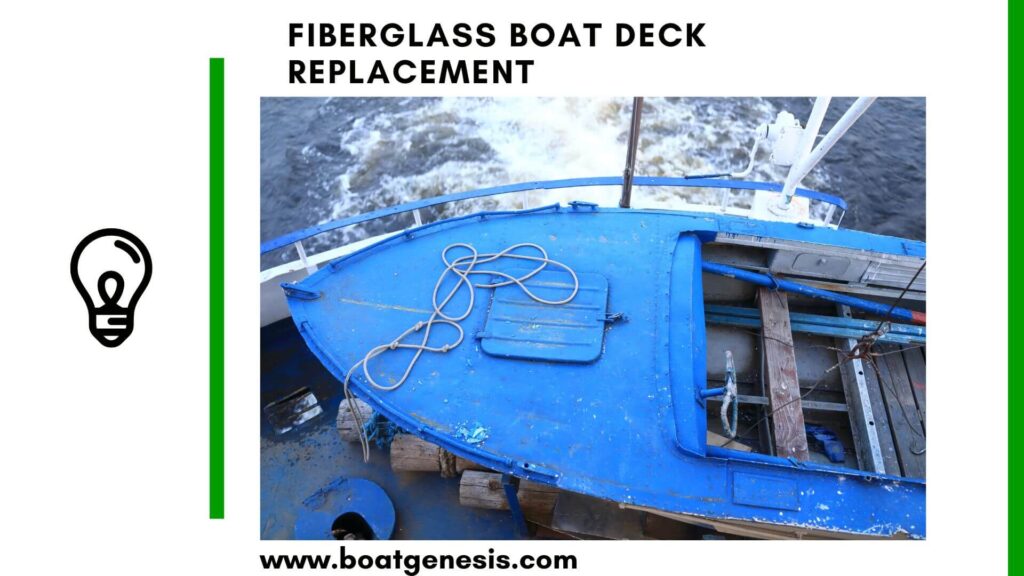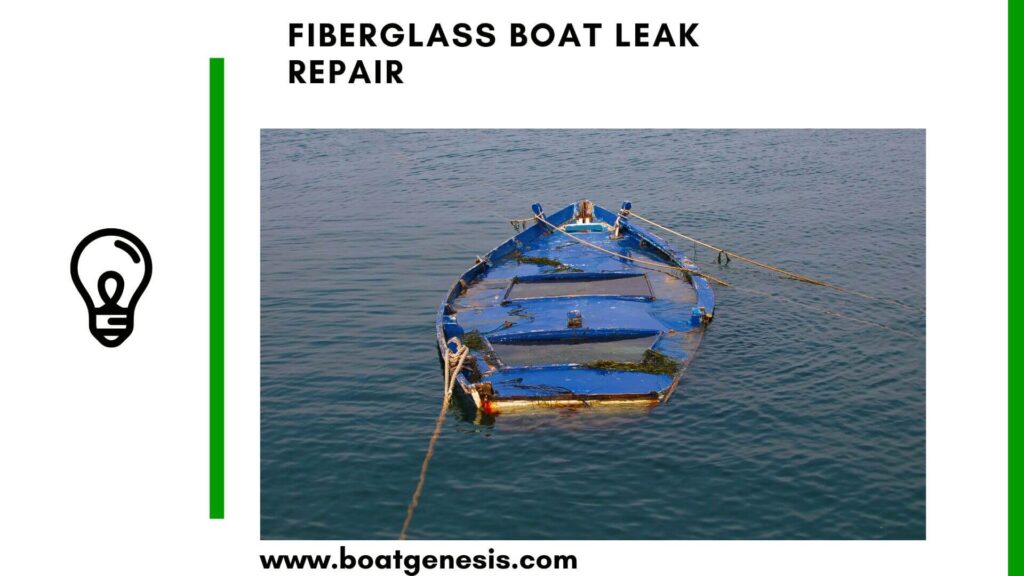If your fiberglass boat’s deck is looking worn out, replacing it can give your vessel a whole new look. While fiberglass deck replacement is not always a simple DIY project, with the right preparation and materials, it can be accomplished.
In this post, we’ll walk through the key steps to replacing your boat’s fiberglass decking and get you back out enjoying your refreshed craft.
Fiberglass Boat Deck Replacement
Here are my recommended steps to replace your fiberglass boat deck.
1. Assessing the Existing Deck
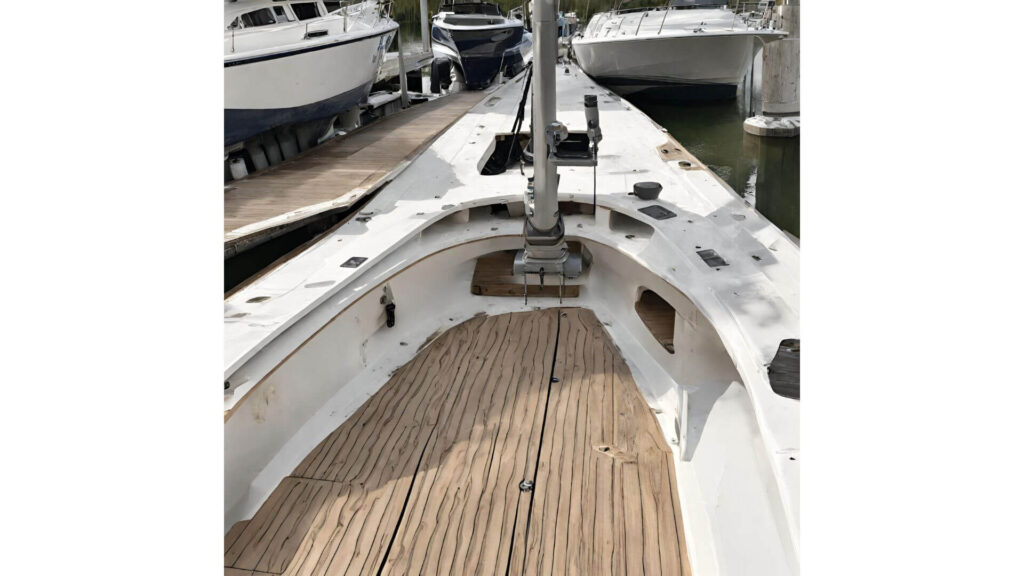
The first step is to thoroughly assess the current deck’s condition. Check for areas of damage, dry rot, cracking or soft spots.
Inspect places where hardware mounts to ensure backing plates are still secure. If the underside of the deck is accessible, look for cracks, moisture intrusion or gelcoat problems.
Any issues will need to be addressed before new decking is installed.
2. Creating a Game Plan
Once you’ve determined the deck needs replacing, develop a complete game plan for the project.
Carefully plan each stage, from removing old hardware and decking to installing new fiberglass and gelcoat.
Ensure you understand proper safety protocols when using power tools and chemical compounds. Have all necessary materials and tools on hand before beginning.
3. Removing the Old Deck
When ready to start the actual deck replacement process, the first step is removing all hardware mounted to the deck, like cleats, rails and fishing rod holders.
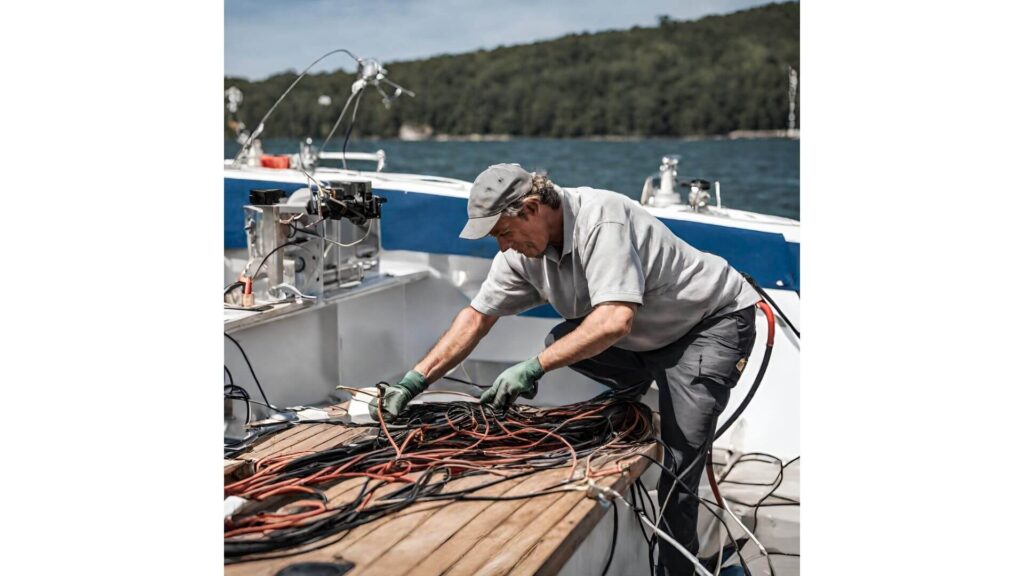
Label pieces for easy reinstallation later.
Carefully cut and peel up old decking, trying to remove gelcoat and fiberglass in whole sections if possible.
Prepare the underlying support structure once the old deck is removed.
4. Installing New Fiberglass Decking
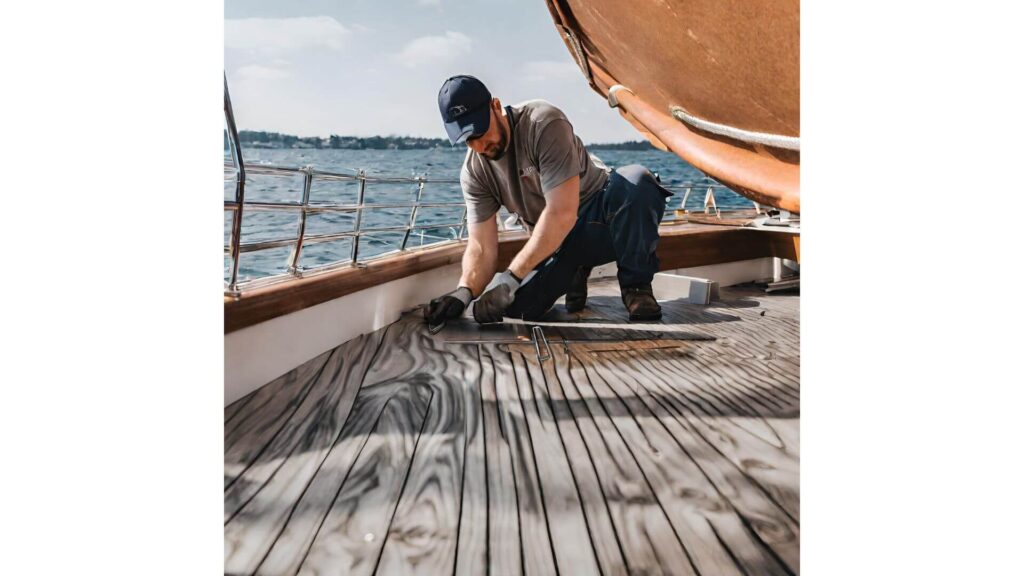
At this point, the boat is ready for new fiberglass decking installation. Carefully measure and cut sections of fiberglass mat and cloth to match the area being covered.
Please, note that this section is useful if you only want to replace some small parts of your deck.
Use resin to adhere layers in place, allowing proper cure times between applications. Ensure underlying supports or stringers are still solid. Add thickened resin to fill any pits or openings.
5. Finding a Replacement Deck
A key step in the process is sourcing the actual decking components, and options are available.
Locate a marine salvage yard to look for old boat decks that can be cut to size.
New fiberglass sheets or panels can be purchased to match specific dimensions.
Various hatch patterns and non-skid textures are offered. Depending on available space to store materials or the ability to transport, custom cut your decking before or after bringing it home.
6. Purchasing a Complete Deck(Optional)
For those wanting to eliminate the work of sourcing separate decking materials and custom fabrication, another option is ordering a finished replacement deck.
Contact manufacturers of boat components in your local area to either customize or select a premade deck cut precisely for your vessel’s model.
Going this route ensures all new deck parts are cohesive, often with hardware pre-installed.
The convenience of having an entirely new deck assembly delivered and ready for installation can make the replacement process far simpler for some owners.
Just be prepared to pay a premium over piecing together your own components.
Choosing between custom building or buying pre-fabricated depends on your budget, skills and how involved you want the project to be.
7. Reinstalling Hardware
The last steps include drilling through the new decking to reinstall cleats, rails, rod holders and any other hardware that was removed initially.
Use a sealant to create waterproof holes surrounding fastener openings.
With all components securely remounted, the boat is ready to have electronics, seating and other items placed back on the refreshed deck.
==>> You might also be interested in reading my fiberglass boat gunnel replacement tips here.
Required Labor & Considerations
The deck replacement provides a prime opportunity to also address structural issues and upgrade other elements of the boat at the same time.
Depending on the scope of your project’s ambitions, more people may be needed.
For example: 1 person may be sufficient for just swapping out the deck panel or panels. But when you add wanting to also remodel the underlying support frames, and adding electrical or plumbing system enhancements, it may increase the number of people needed.
Carefully weigh the labor required for every aspect before beginning a smoother installation process.
Bottom Line
While fiberglass boat deck replacement is an involved, labor-intensive project, the end results make the time and cost worthwhile.
Just be sure to properly assess the existing deck, create a comprehensive plan, and have all needed materials on hand before beginning.
With some patience and fiberglass working skills, you can give your older boat an impressive facelift.
Ready to bask on a like-new deck? Just take replacement one step at a time.

Founder of BoatGenesis, Warren has hands-on experience in fiberglass boat repairs, marine equipment testing, and powerboat building. Learn more about Warren.

